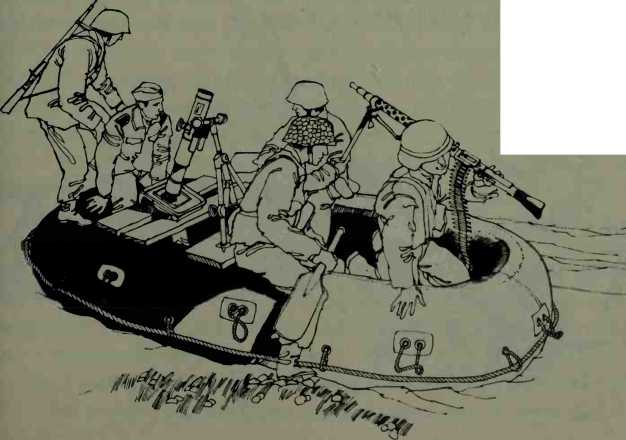At the heart of the blitzkrieg technique and its versatile use of heavy fire were the combat engineers. The Germans called them Pioniere, but they are not to be confused with manual-labor units that built roads in back areas of other armies. The Pioniere was a highly trained specialist who was likely to be at the front of the hardest fighting. But instead of the infantry’s heavy weapons—antitank guns, howitzers, and mortars—the Pioniere had specialist equipment. For combat there were flamethrowers, mines, explosives in many shapes and sizes, smoke equipment, mine detectors, and barbed wire. They had inflatable boats and pontoons as well as two bridging columns per division. Combat engineers also had power saws, pile drivers, compressors, generators, emergency lighting equipment, welding gear, and a range of hand tools.
The infantry could do many simple engineering tasks for themselves. Inflatable boats were supplied down to company level, while the infantry battalion had pontoons and trestles that could be put together to make a bridge of 5 tons’ capacity. One observer saw such a team under training; they bridged a river and dismantled the equipment six times in one afternoon.
FIGURE 14 River crossing with MG34 machine gun and 8.1 cm Kurzer mortar.

For a river crossing under fire, inflatable boats were used for the assault and then relegated to ferry or cable ferry use. Large inflatable boats could carry a 3.7 cm antitank gun or the small infantry howitzer. Even tanks could be rafted. Piers of pontoons or boats could be lashed together to make a bridge of 4 tons’ capacity. Over this came men and weapons to enlarge a bridgehead. For the tank, a river remained a formidable obstacle. The Pioniere units searched for ways of overcoming it.




 World History
World History









